Berlin's Best Christmas Activities and Winter Adventures - Discover Exciting Holiday Secrets

Wilkommen
Ready to dive deep into Berlin’s soul? Let’s embark on a cultural adventure across the city!
Overview
Berlin’s winter season (November to February) brings brisk air and shorter days, which only adds to the city’s enchanting ambience. Expect temperatures ranging from -1°C to 5°C (30°F to 41°F), with the occasional snowfall that dusts Berlin’s historic streets in white.
Booking your flights
For a winter trip to Berlin, timing your flight booking can save you money and ensure better availability. Here’s a list of 5 hacks to help you book at the optimal time:
1. Book 2-3 Months in Advance for the Best Deals
For the winter season, booking two to three months ahead (around September to November for December to February travel) often yields the best rates. Airlines typically release sales and discounts in early fall for winter travel.
Booking early is especially recommended if you plan to visit during December's holiday season, as Christmas markets and New Year's festivities make this a popular time.
2. Take Advantage of Late January & Early February for Lower Prices
If you’re flexible with your dates, late January to early February generally has lower airfare and hotel rates. Fewer tourists visit after the holidays, making this a quieter, more budget-friendly option.
The post-holiday season also means more availability in popular areas without the usual crowds.
3. Avoid Booking During Peak Holiday Weeks
If you must travel around the holidays, aim to fly a few days before or after the main holiday dates to find better deals.
4. Use Fare Alerts and Monitor Trends
Set up fare alerts through websites like Google Flights, Skyscanner, or Hopper. These tools monitor prices and notify you when they drop, helping you book at the best time.
Many airlines and booking platforms also have predictive tools that analyze pricing trends, so you’ll know when to book based on historical data.
5. Book During Midweek for Cheaper Flights
Flight prices tend to be lower for bookings made on Tuesdays and Wednesdays. Midweek flights (Tuesdays and Wednesdays for travel) are often less expensive than weekend flights, which are in higher demand.
Top travel tips
What to pack?
Layers, insulated outerwear, gloves, scarves, and waterproof boots are a must. For extra warmth, wear thermal socks, undershirts, and pants.
Getting Around
Berlin’s efficient public transport runs smoothly year-round, and in winter, it’s the best way to explore the city’s highlights while staying warm.
Learn all about it, plus get a free list of the most beautiful train stations in the city where you can escape the cold, with my guide:
Timing Your Visits
If you want a quieter experience, consider visiting popular sites like Museum Island or seasonal Christmas markets in the early morning.
Top Cultural Landmarks with Winter Narratives
Brandenburg Gate
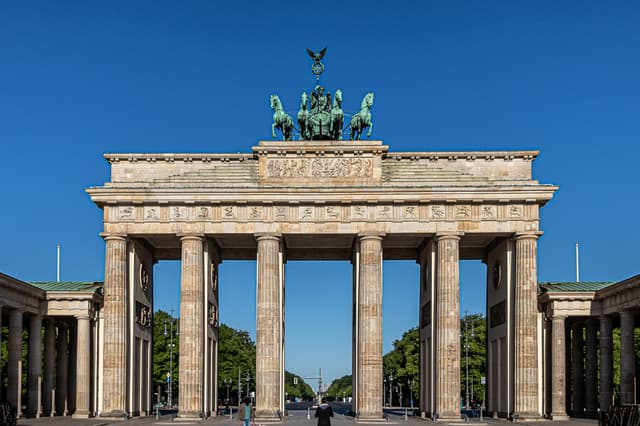
One of Berlin’s most iconic sites, the Brandenburg Gate takes on a serene beauty when blanketed in snow. Bundle up and walk through Pariser Platz, taking a moment to appreciate the gate’s significance as a symbol of unity and peace.
Museum Island
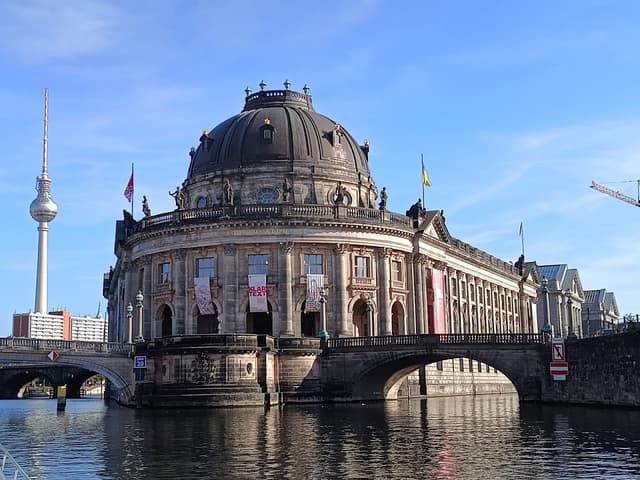
A UNESCO World Heritage Site, Museum Island houses some of Berlin’s most revered museums, including the Pergamon and the Neues Museum. In winter, these museums often host special exhibitions. Take advantage of the quiet atmosphere and dive deep into Berlin’s rich history and artefacts.
Berlin Wall Memorial
Must-See Spots: Watchtower, Chapel of Reconciliation, preserved Wall sections, East Side Gallery murals
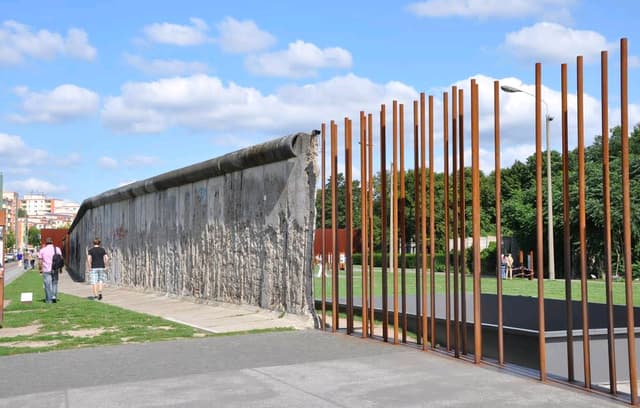
For a sobering look at Berlin’s recent history, visit the Berlin Wall Memorial on Bernauer Strasse. The winter season adds a haunting layer to this historical landmark, with frosty air reminding visitors of the resilience Berliners displayed during difficult times.
East Side Gallery
For a more colourful take on the Wall, visit the East Side Gallery, where vibrant murals contrast with winter’s greys.

Charlottenburg Palace and Gardens
Must-See Spots: Baroque rooms, winter garden paths, Charlottenburg Christmas Market
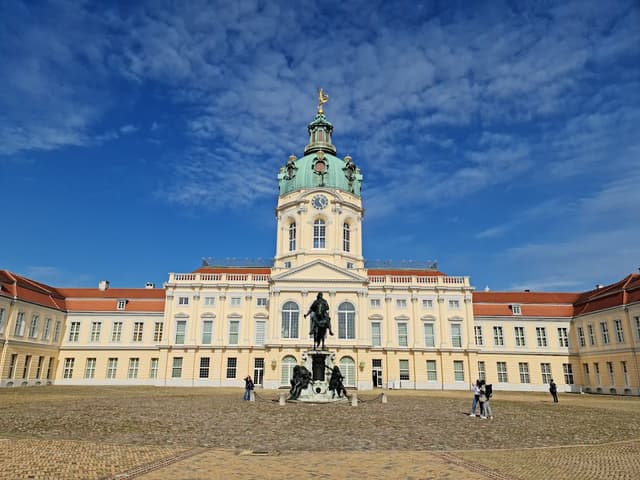
While popular, Charlottenburg Palace takes on new appeal in winter. The palace and its gardens feel tranquil under a blanket of snow, and the winter light enhances the Baroque architecture. For a unique experience, visit during the Christmas market season, when the palace grounds are filled with festive stalls.
Bebelplatz and State Opera
Must-See Spots: Empty Library memorial, State Opera, St. Hedwig’s Cathedral
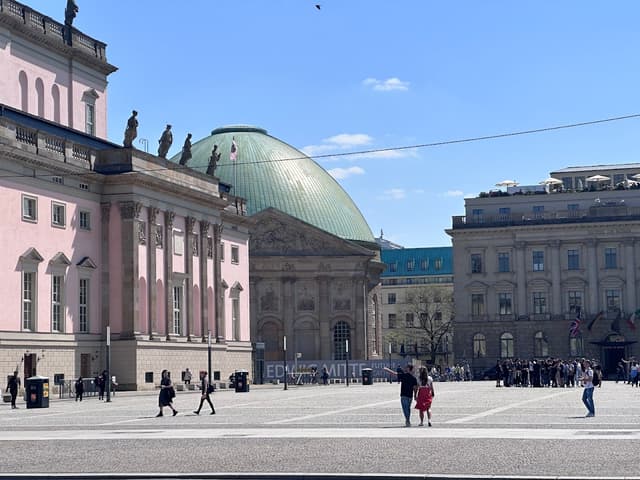
Bebelplatz, the site of the infamous Nazi book burning in 1933, is home to the thought-provoking “Empty Library” memorial. The square is flanked by the Berlin State Opera and St. Hedwig’s Cathedral, and a winter visit brings a contemplative quiet to this significant landmark. Take a moment to reflect, then head to nearby Unter den Linden for a stroll through Berlin’s wintry boulevards.
Berlin Cathedral (Berliner Dom)
Must-See Spots: Dome view over Museum Island, royal crypts, organ performances
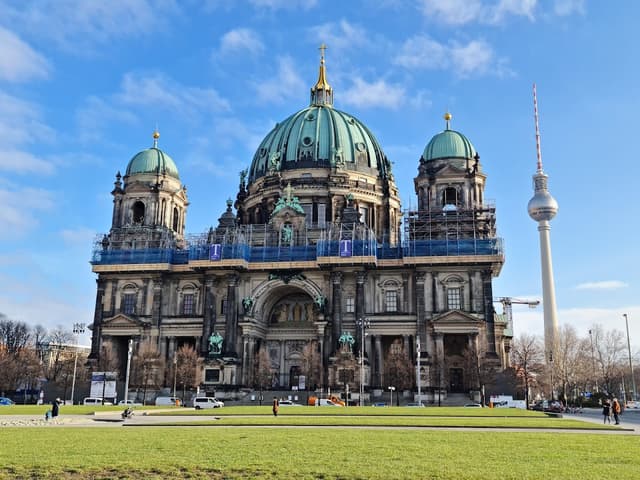
Berlin’s grand cathedral takes on a different mood in winter, with fewer crowds and a peaceful atmosphere. The view from the dome over a snowy Museum Island is worth the climb. Step inside to marvel at its intricate architecture and learn about the city’s religious and architectural history.
Kaiser Wilhelm Memorial Church
Must-See Spots: Memorial Hall, Christmas lights, Breitscheidplatz market
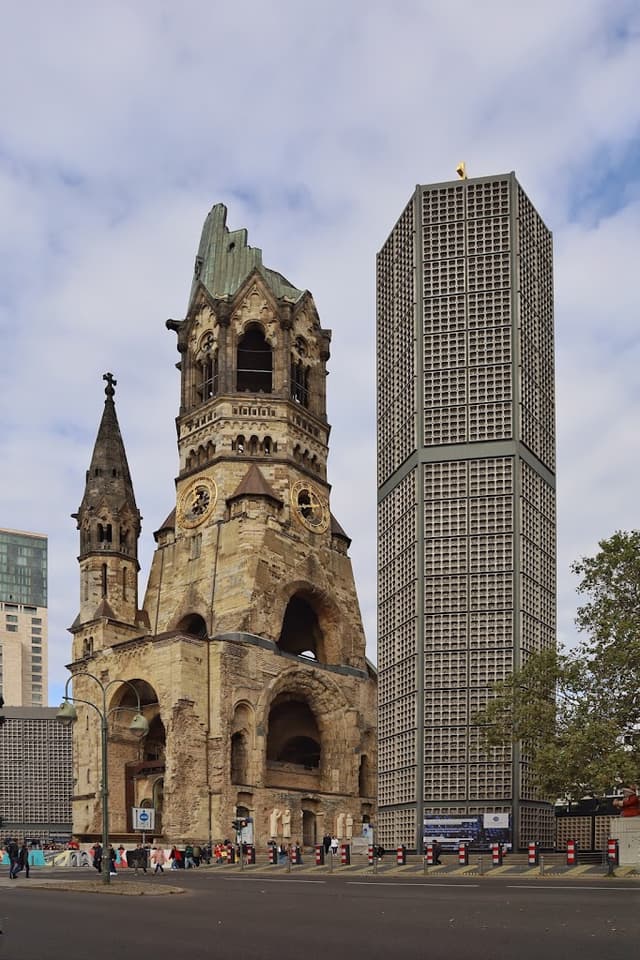
This historic church, damaged during World War II, stands as a poignant symbol of resilience. In winter, the modern glass chapel and the ruins are beautifully lit, casting a blue glow over the area. Located near the Christmas market at Breitscheidplatz, it’s an ideal stop for reflection and seasonal charm.
The Jewish Museum Berlin
Must-See Spots: Garden of Exile, Memory Void, Holocaust Tower, permanent exhibits

The Jewish Museum’s distinctive architecture and exhibits provide a contemplative experience, heightened by the starkness of winter. The museum’s “Garden of Exile” and “Memory Void” are particularly evocative, especially under a winter sky. This museum offers essential insights into Jewish culture, history, and Berlin’s past.
Museum of European Cultures (Museum Europäischer Kulturen)
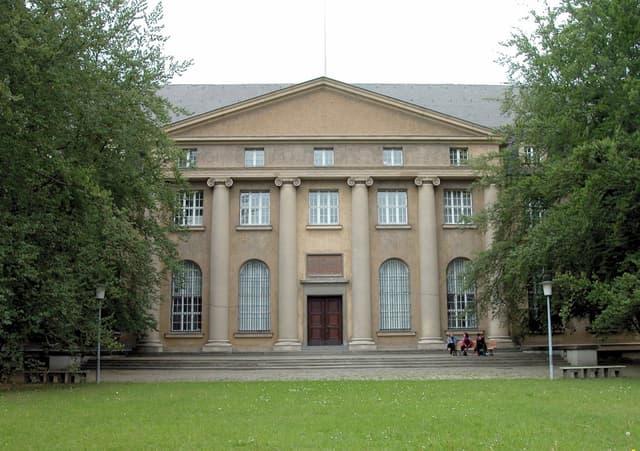
Must-See Spots: Winter traditions exhibit, cultural artifacts, temporary exhibitions on seasonal customs
Märkisches Museum
Must-See Spots: Berlin Room, ancient artifacts, Spree River view
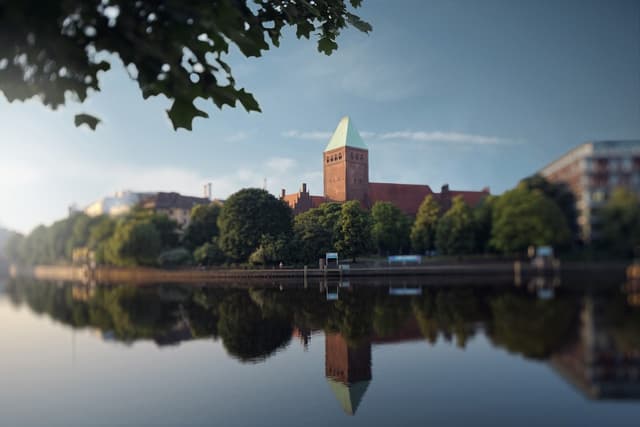
For those seeking a lesser-known landmark, the Märkisches Museum delves into Berlin’s medieval and cultural history. Located along the Spree, the museum’s Gothic-inspired architecture is beautifully accentuated in winter. It’s an ideal spot for history enthusiasts wanting to explore beyond the usual landmarks.
St. Nicholas’ Church (Nikolaikirche) and Nikolaiviertel
Must-See Spots: Nikolaikirche’s Gothic interiors, Ephraim Palace, medieval streets of Nikolaiviertel
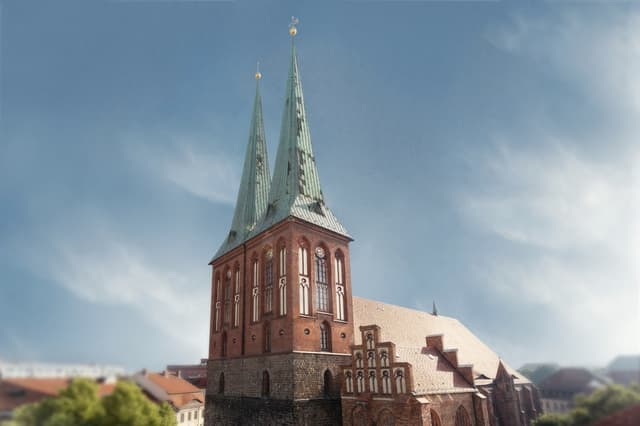
Berlin’s oldest church, St. Nicholas’ Church, anchors the historic Nikolaiviertel district. This cobbled area feels like a winter village within the city, and the church itself, dating back to the 13th century, provides a fascinating glimpse into Berlin’s medieval roots. Nearby, quaint cafes offer warmth and traditional German pastries.
Liebermann Villa on Lake Wannsee
Must-See Spots: Art gallery, winter gardens, lakeside views
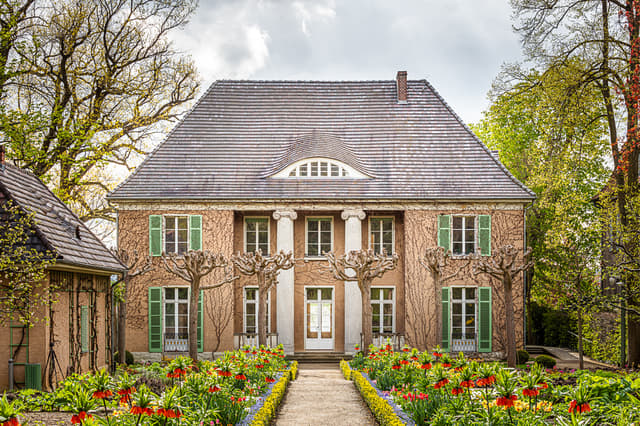
Just a short distance from the Wannsee Conference site, the Liebermann Villa was once the summer home of artist Max Liebermann. Today, the villa is a museum dedicated to his work and life, showcasing art and peaceful lake views. In winter, the snow-covered gardens add a serene beauty, and art lovers will appreciate Liebermann’s depictions of German landscapes.
Soviet War Memorial at Treptower Park
Must-See Spots: Main statue of Soviet soldier, entrance arches, reliefs along the memorial walkway
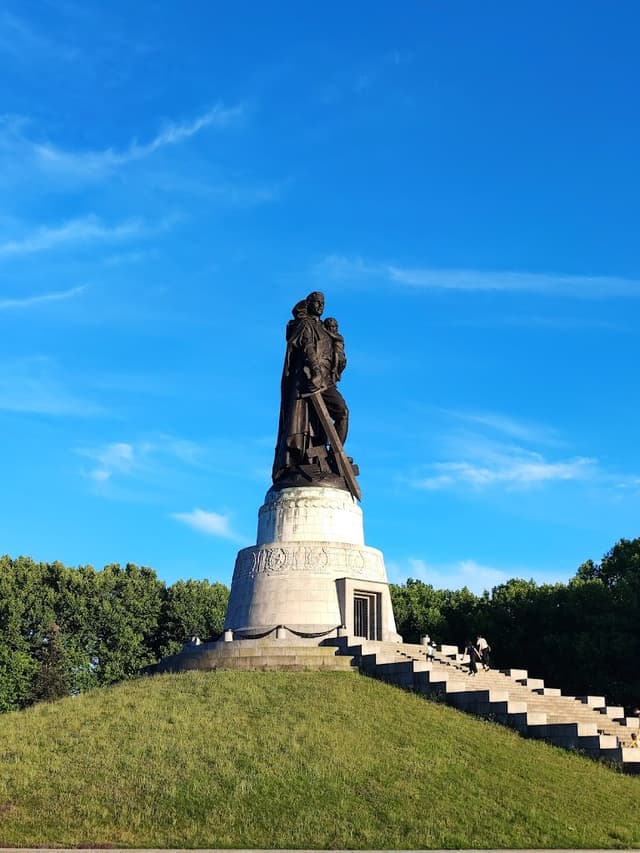
This grand memorial, dedicated to the Soviet soldiers who fell in World War II, is especially striking in winter when snow emphasizes its solemn design. Located in Treptower Park, the memorial’s impressive scale and symbolic statues offer a thought-provoking visit, especially in Berlin’s winter quiet.
Grünewald Hunting Lodge
Must-See Spots: Cranach collection, wood-paneled rooms, snow-covered forest trails
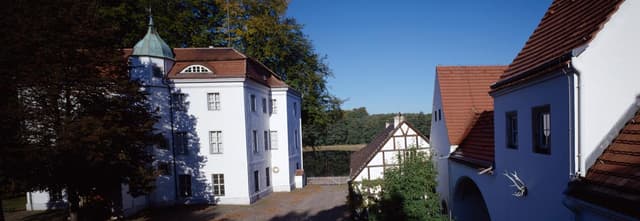
Berlin’s oldest surviving palace, Grünewald Hunting Lodge, offers a unique historical site within a serene forested area. The 16th-century lodge now houses a museum with works by Lucas Cranach and other Renaissance artists. Winter adds to the charm of this offbeat site, making it a cozy retreat away from the city center.
Teufelsberg
Must-See Spots: Abandoned spy towers, panoramic views, street art on the radar domes
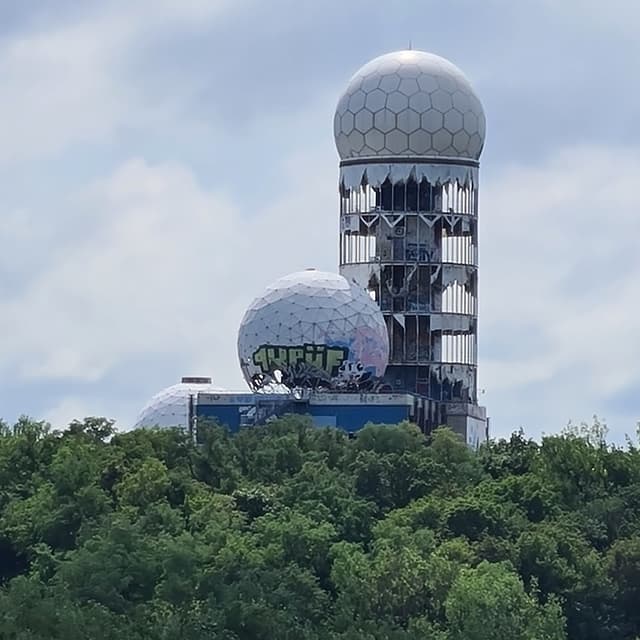
For adventurous travellers, Teufelsberg is an abandoned Cold War spy station perched on an artificial hill west of Berlin. In winter, the graffiti-covered structures look striking against the snowy landscape. Offering panoramic views over the city, it’s a perfect destination for photographers and history enthusiasts alike.
These landmarks provide both well-known highlights and lesser-visited sites, allowing first-time visitors and seasoned travellers to experience Berlin's cultural depth and historical resonance in winter. Whether seeking famous monuments or off-the-beaten-path sites, these spots will deepen any traveller’s connection to Berlin’s unique history and heritage.
Winter Festivals & Cultural Events
Christmas Markets
Berlin’s Christmas markets are not just about shopping—they’re a window into German tradition.
As diverse as the city itself, these markets offer everything from traditional German treats to modern holiday experiences. Each market has its unique atmosphere, perfect for warming up with mulled wine and enjoying festive lights. Here’s a selection of Berlin’s must-visit Christmas markets.
Charlottenburg Palace Christmas Market
Location: Charlottenburg Palace, Spandauer Damm
Must-See Spots: Palace light displays, artisan stalls, German mulled wine stands

Set against the elegant backdrop of Charlottenburg Palace, this market combines a regal atmosphere with a cosy, traditional vibe. The illuminated palace, festive decorations, and charming stalls make this market feel particularly magical. Expect a range of high-quality crafts, Christmas ornaments, and delicious seasonal treats.
Gendarmenmarkt Christmas Market
Location: Gendarmenmarkt Square, Mitte
Visit the WeihnachtsZauber at Gendarmenmarkt, where artisans showcase handmade goods. The blend of warm mulled wine (Glühwein) and fresh gingerbread smells will transport you into a festive spirit that is truly magical.
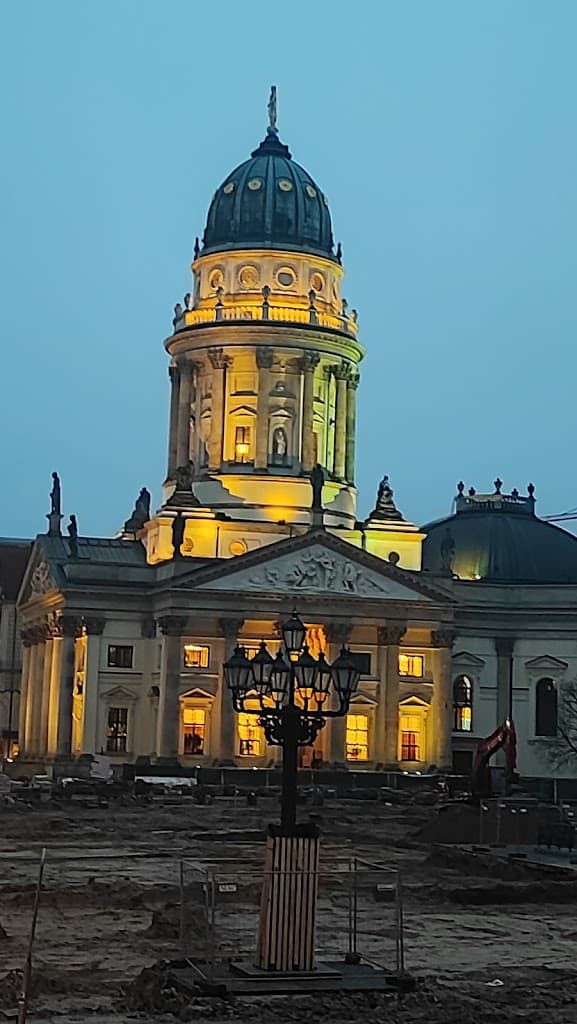
One of Berlin’s most famous markets, the Gendarmenmarkt Christmas Market is nestled between the French and German Cathedrals, creating a picture-perfect holiday scene. This market offers handcrafted gifts, gourmet food, and entertainment such as choirs and live music. Its central location and unique architecture make it a top choice for visitors.
Alexanderplatz Christmas Market
Location: Alexanderplatz, Mitte
Must-See Spots: Ferris wheel, ice rink, large Christmas pyramid
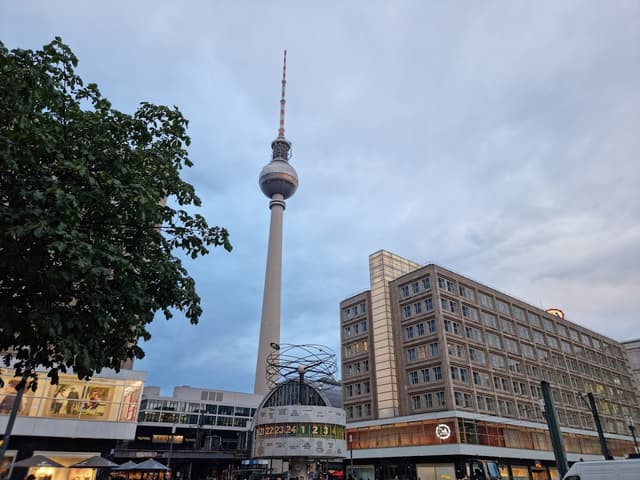
In the heart of Berlin, the Alexanderplatz Christmas Market offers a classic holiday experience with a modern twist. The market features a large ice rink, a Ferris wheel, and various food stalls. You’ll find everything from bratwurst to international holiday treats, plus plenty of festive decorations.
Spandau Christmas Market
Location: Spandau Old Town, Spandauer Altstadt
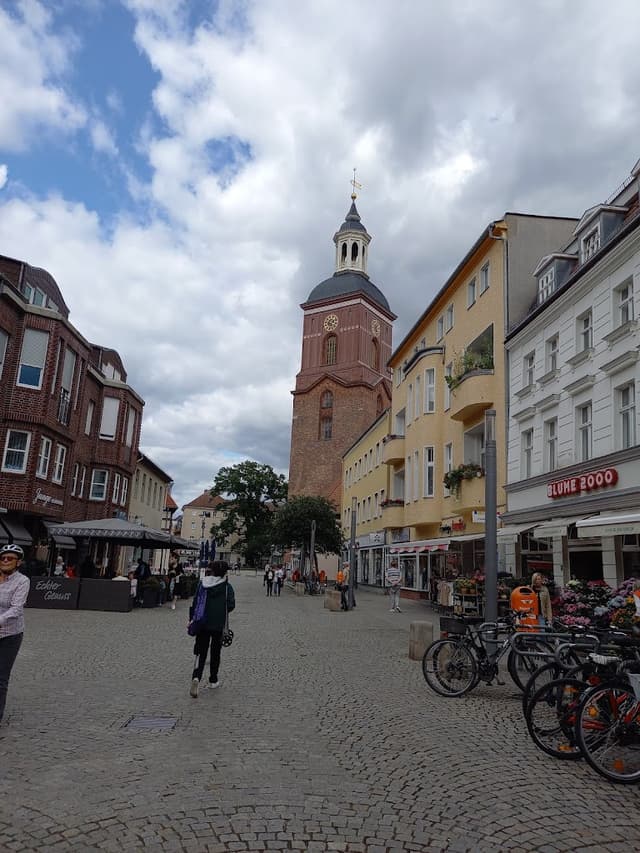
As one of the largest Christmas markets in Berlin, Spandau’s market spreads throughout the historic Old Town, offering a medieval village feel with over 400 stalls on weekends. From handmade crafts to live nativity scenes, this market provides a unique and traditional experience away from the city center.
Lucia Christmas Market at Kulturbrauerei
Location: Kulturbrauerei, Prenzlauer Berg
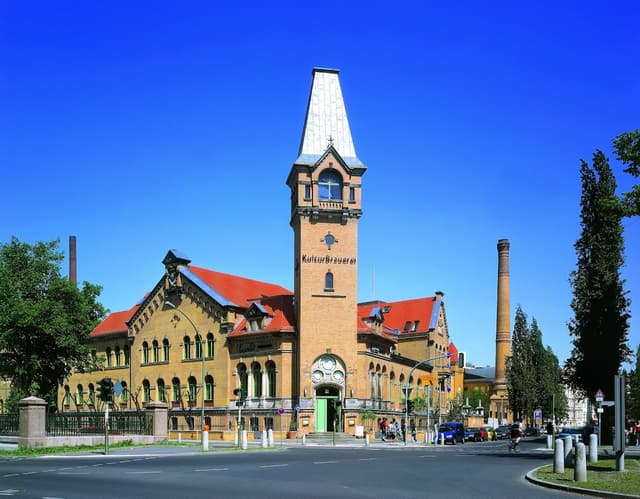
Weihnachtszauber at Potsdamer Platz
Location: Potsdamer Platz, Mitte
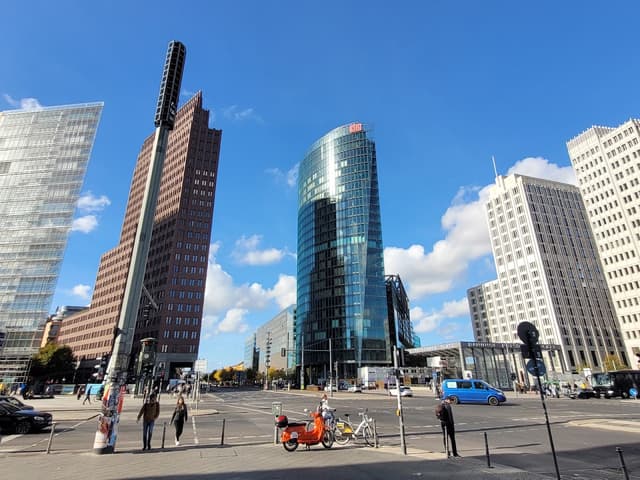
Potsdamer Platz transforms into a winter wonderland during the holiday season, with a Christmas market that features an alpine village theme. Enjoy tobogganing, an ice rink, and festive food from around the world. This market is perfect for families and those looking for a more modern holiday experience.
Berliner Weihnachtszeit at Rotes Rathaus
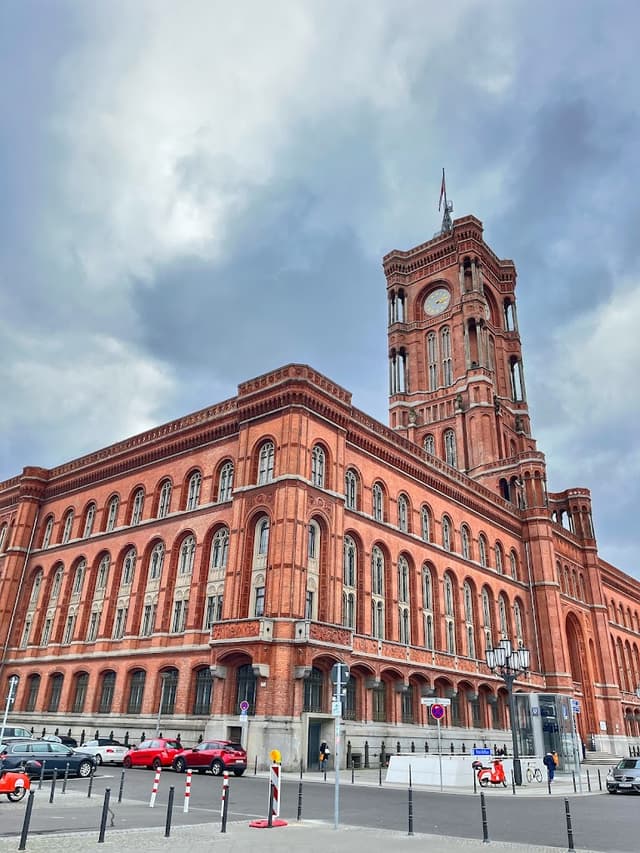
Location: Rotes Rathaus, Mitte
Located next to Berlin’s iconic Red Town Hall, this market offers a blend of traditional charm and family-friendly attractions, including a large ice rink and historic Ferris wheel. With the majestic Rotes Rathaus as a backdrop, this market feels both festive and quintessentially Berlin.
Eco Christmas Market (Ökomarkt) at Kollwitzplatz

Location: Kollwitzplatz, Prenzlauer Berg
This eco-friendly market focuses on sustainability, featuring handmade, organic, and fair-trade products. Located in Prenzlauer Berg, this market offers an alternative experience with a focus on environmentally conscious holiday gifts and snacks.
Weihnachtsmarkt in Dahlem (Domäne Dahlem Christmas Market)
Location: Domäne Dahlem, Dahlem
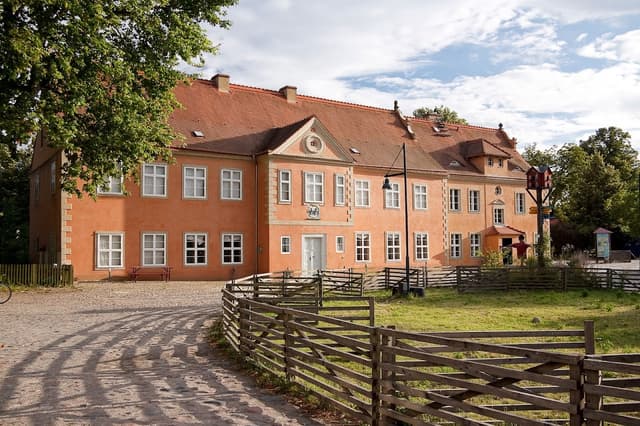
Located in an open-air museum and farm, this Christmas market provides a cosy, countryside feel. Expect traditional handicrafts, fresh farm produce, and family-friendly activities like candle-making workshops. This market’s rustic charm and historic setting make it stand out from Berlin’s urban markets.
Rixdorf Christmas Market
Location: Richardplatz, Neukölln
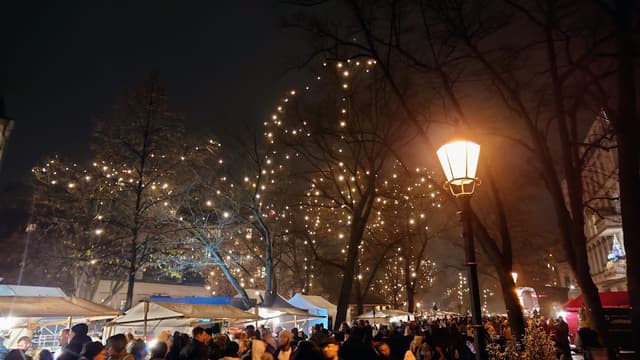
This unique market is located in the quaint neighbourhood of Rixdorf in Neukölln. With its traditional lantern-lit atmosphere, the Rixdorf Christmas Market feels like a step back in time. Expect traditional German holiday fare, handmade crafts, and a heartwarming neighbourhood vibe.
Each of these Christmas markets offers its own festive experience, from traditional German treats and handcrafts to Nordic-inspired or eco-friendly stalls. Whether you’re looking for family fun, gourmet delights, or a cosy holiday atmosphere, Berlin’s Christmas markets will fill you with the holiday spirit and create memories to treasure.
You can also book a guided Christmas tour through Getyourguide:
Long Night of Museums
In January, Berlin’s museums open their doors late into the night, creating an extraordinary cultural experience for visitors. Wander through collections after dark and experience exhibits with unique evening lighting that brings a new perspective to the artworks.
To keep up with these and any seasonal Berlin events, keep an eye on Berlin.de -the official website of Berlin:
Berlinale International Film Festival
If you’re visiting in February, don’t miss the Berlinale, one of the world’s most prestigious film festivals. Here, you can catch international premieres and screenings that reflect Berlin’s love for art, culture, and cinema.
Find all key and updated info on the official website:
Cozy Cafes and Winter Culinary Spots with Stories
Markthalle Neun
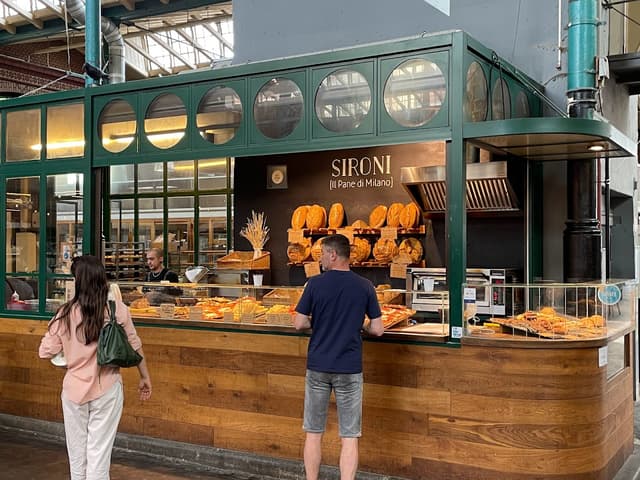
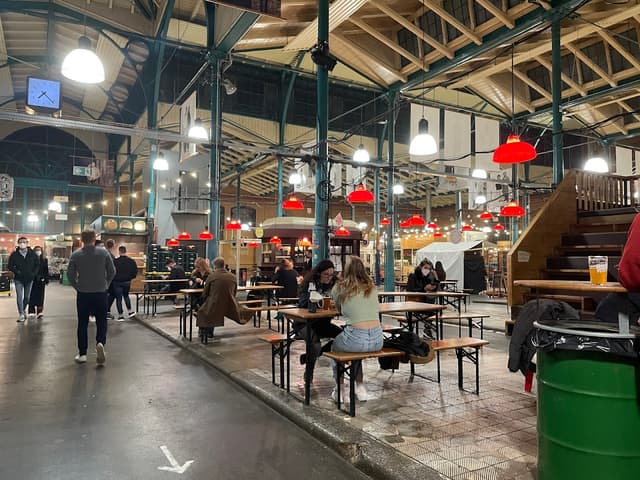
For a taste of Berlin’s diverse culinary scene, head to Markthalle Neun in Kreuzberg. In winter, this vibrant market hall features seasonal treats and traditional German winter foods, like Grünkohl (kale stew) and Kartoffelsuppe (potato soup), with each vendor sharing a piece of Berlin’s cultural diversity.
Literaturhaus Berlin
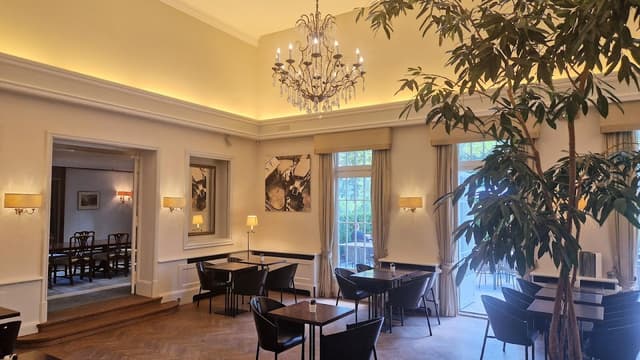
Bode-Museum
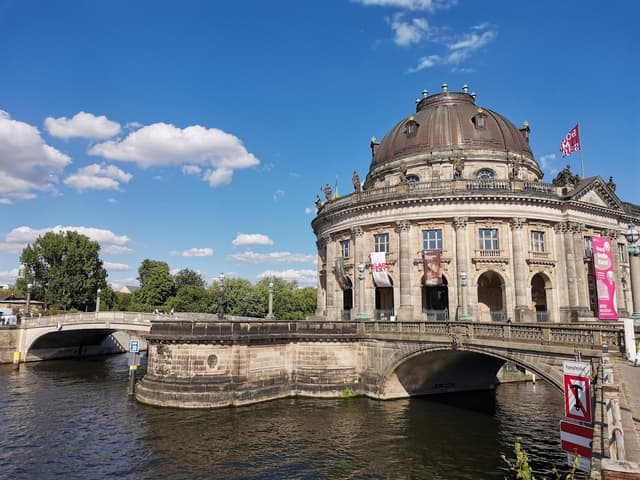
I dare say that the Bode-Museum counts with more than historic artifacts, but also the most beautiful café in Berlin.
More cafés to fill your life with aesthetically pleasing caffeine

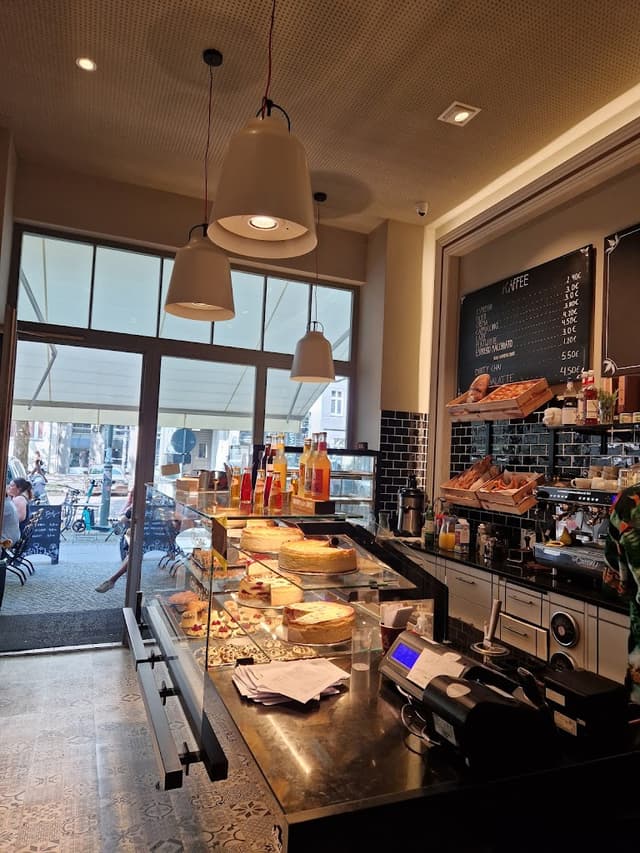

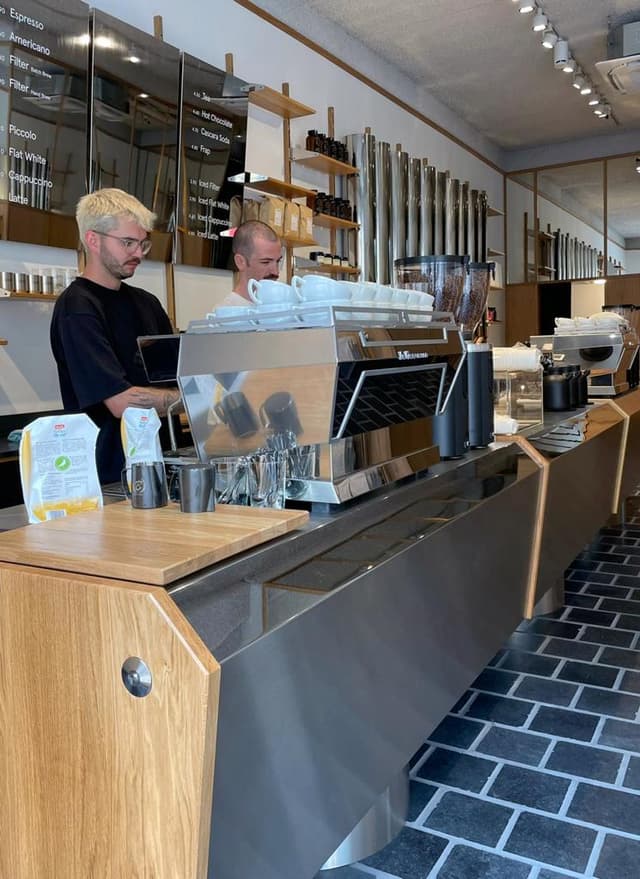

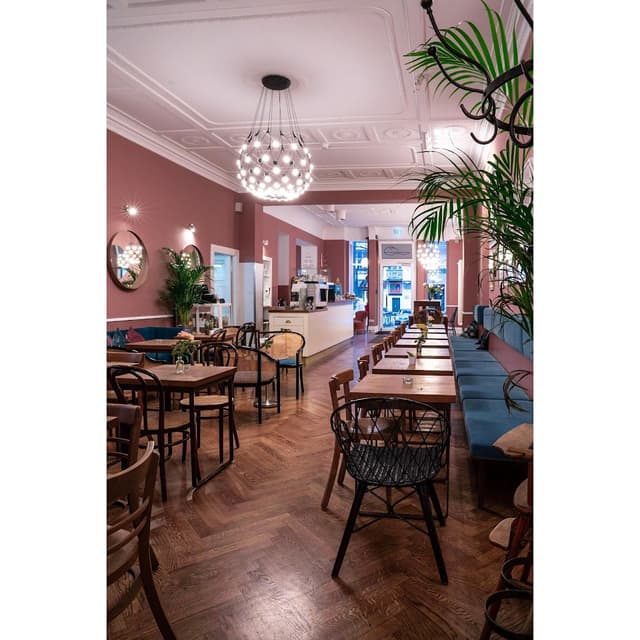

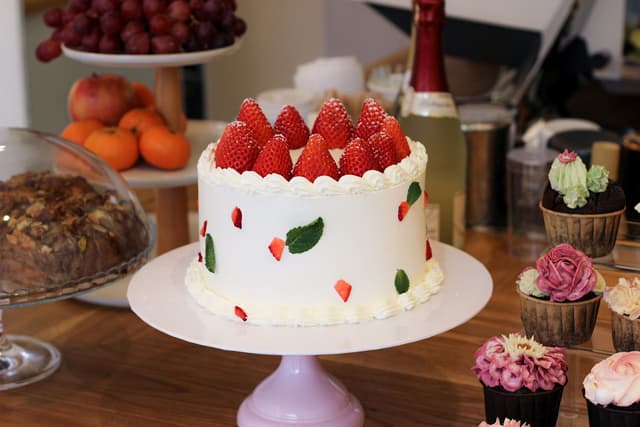
Restaurants to keep the festive spirit

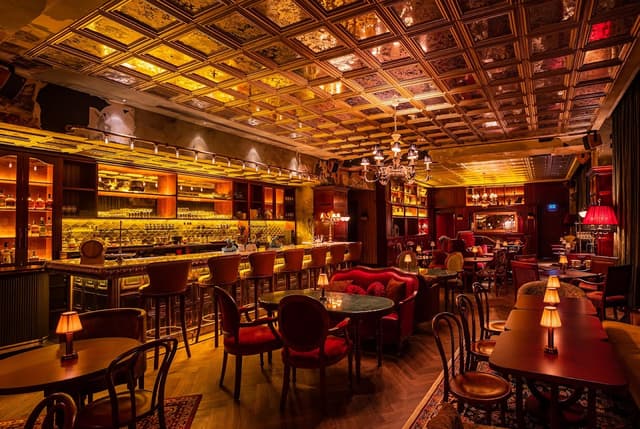

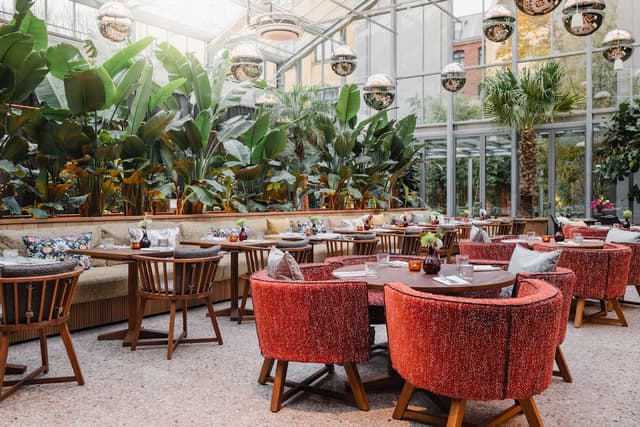

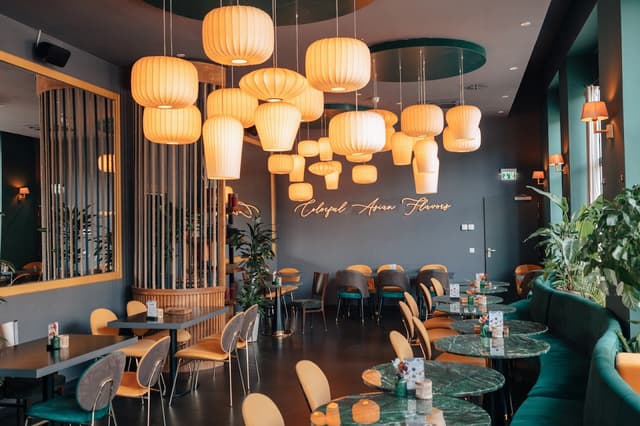




Bars
Berlin Icebar



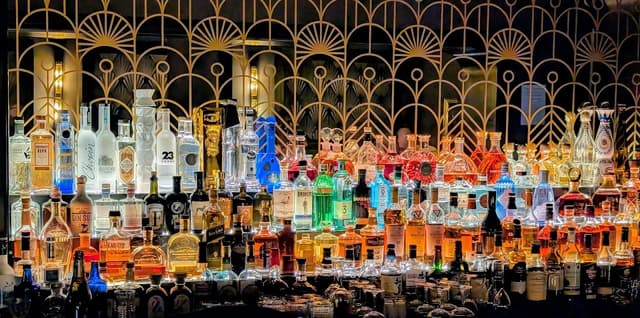

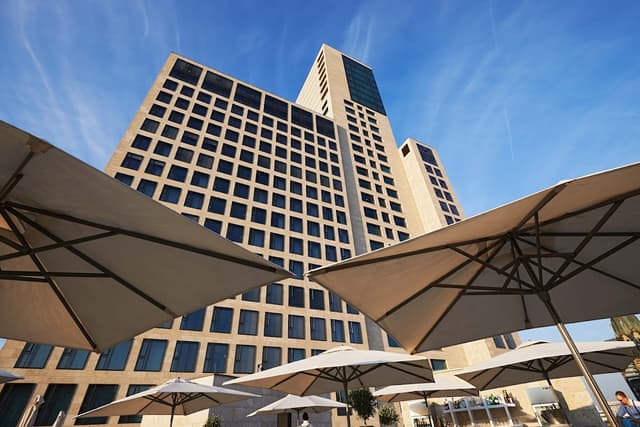

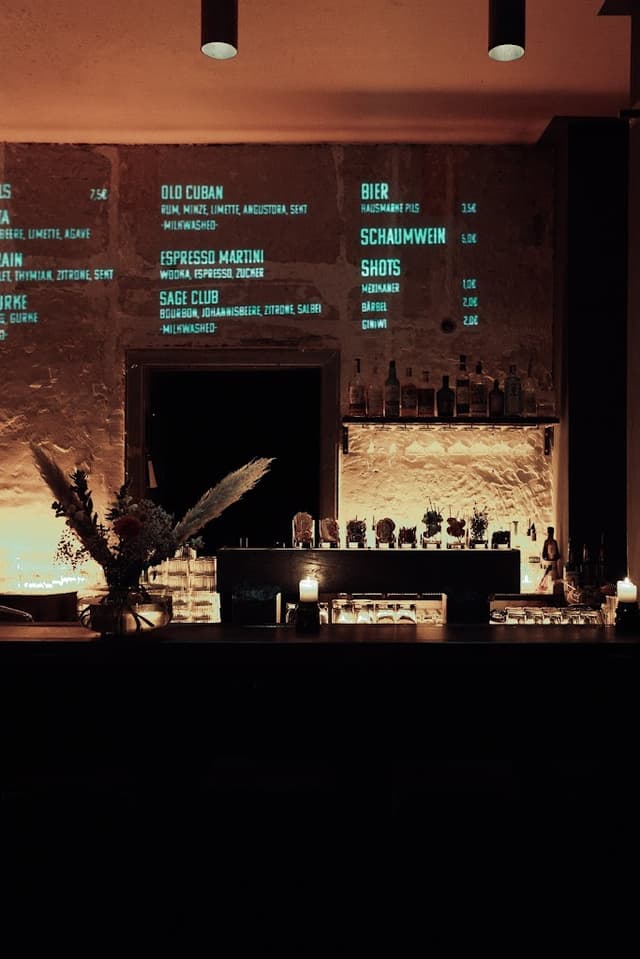
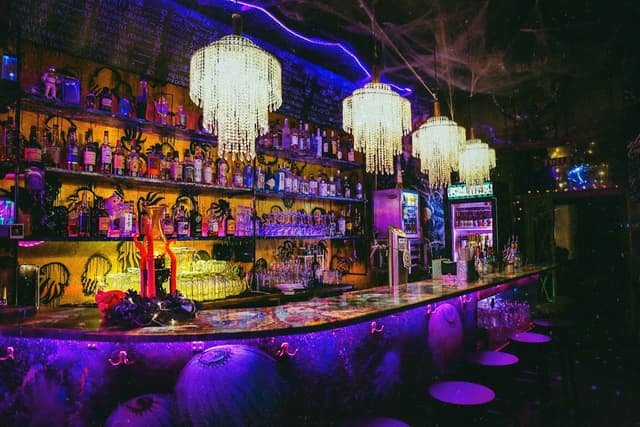
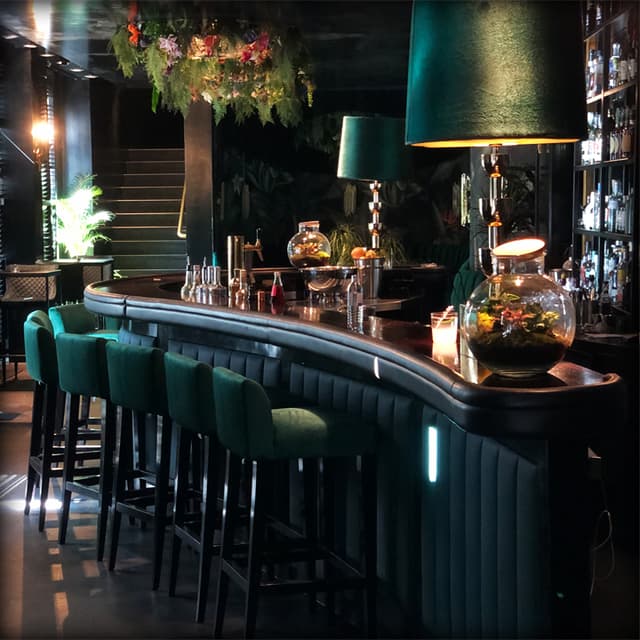
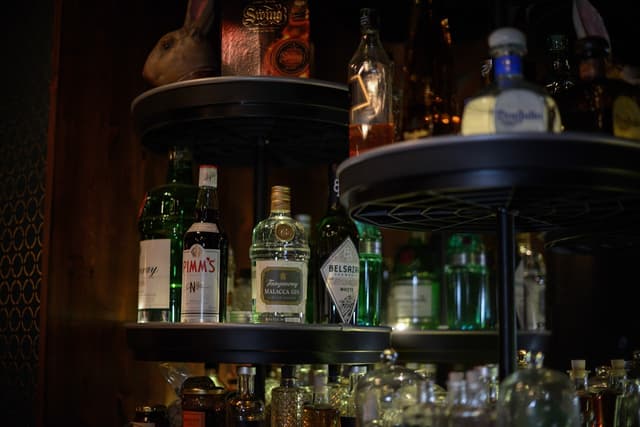
Access my in-depth tasteful map of Berlin's culinary terrain in my Bites & Sips guide:
Urban Art and Graffiti Winter Tour
Explore Berlin’s creative side with a guided winter tour of its graffiti and street art scene. Cold-weather tours often include fewer crowds, making it easier to snap photos and engage with your guide about the stories behind each artwork.
Secret Courtyards in Mitte
Night Tours in Kreuzberg
Kreuzberg’s vibrant history as an alternative cultural hub is even more intriguing in winter. Join a night tour to learn about the area’s historical significance and transformation. Visit pubs and galleries that serve as the heart of Berlin’s counterculture.
Wine on Canvas
Berlin Christmas Sightseeing Cruise
Berlin for Different Types of Travellers
Solo Travelers
Explore quiet museums, take a street art tour, or settle into a cosy café with a book. You, a solo adventurer, or any type of traveller, can refer to my 24-hour guide for all things Berlin and cafés, compressed in a one-day guide:
Couples
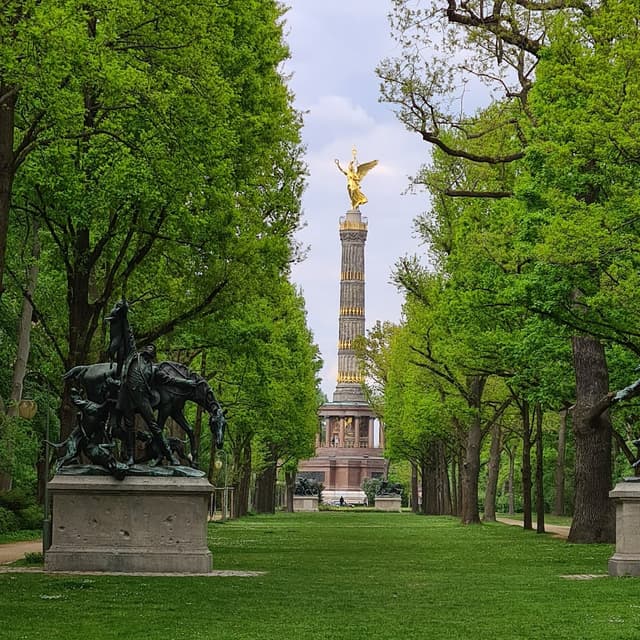
Enjoy a romantic winter stroll through Tiergarten, or go ice skating hand-in-hand at one of Berlin’s outdoor rinks (mainly found at main Christmas markets).
Families
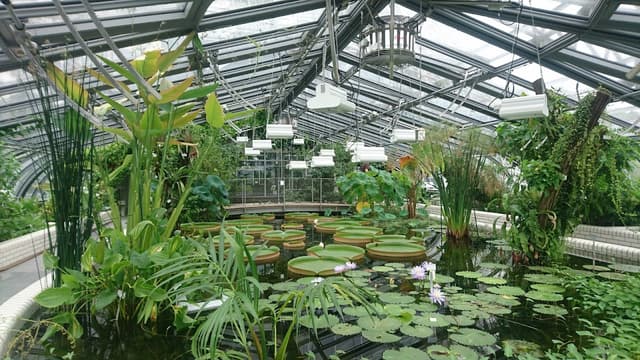
Visit Berlin Zoo’s winter exhibits or explore the Magic Forest at the Botanischer Garten’s Christmas Garden for a family-friendly festive experience.
Winter Day Trips from Berlin
Berlin’s surrounding areas are filled with quaint towns, historic sites, and breathtaking natural landscapes that become even more magical in winter. Here’s a selection of top destinations within a few hours from Berlin, each offering its own winter delights.
Dresden's Timeless Magic
Travel Time: 2 hours by train.
Must-See Spots: Striezelmarkt, Frauenkirche, Zwinger Palace, Brühl’s Terrace
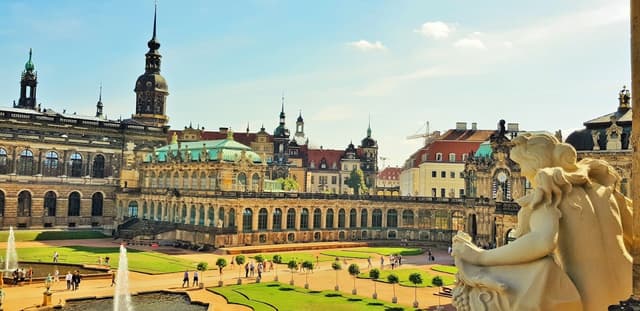
Winter brings a fairy-tale quality to Dresden, especially in the historic Altstadt. Known as the “Florence on the Elbe,” Dresden’s architectural marvels like the Frauenkirche and Zwinger Palace take on an ethereal charm against snowy backdrops. Visit the Striezelmarkt, one of Germany’s oldest Christmas markets, where you can savour traditional Dresden treats like Stollen and sip mulled wine. A day in Dresden promises stunning sights, cosy cafes, and unforgettable winter magic.
Dresden, also known as the "Florence of the Elbe", so make sure to save my guide for any future opportunity to visit this unique city.
Postdam's Winter Palaces
Travel Time: 30 minutes by train
Must-See Spots: Sanssouci Palace and Park, Neues Palais, Barberini Museum, Dutch Quarter
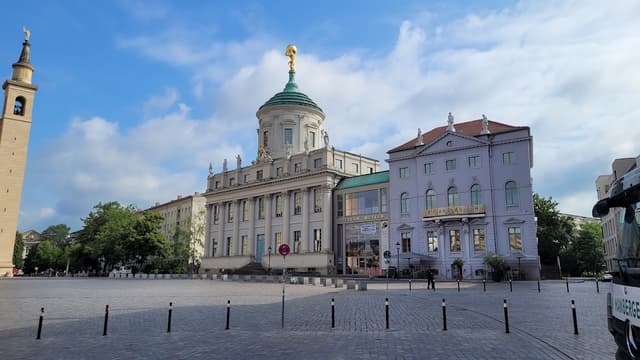
Just a short train ride from Berlin, Potsdam’s royal palaces offer a stunning winter day trip. Walk through Sanssouci Park, and visit the ornate Neues Palais, whose grandeur feels even more surreal against the stark winter landscape.
Potsdam is renowned for its collection of stunning palaces, many of which are part of the UNESCO World Heritage-listed Palaces and Parks of Potsdam and Berlin. Here’s a list of Potsdam’s main palaces:
1. Sanssouci Palace (Schloss Sanssouci)
The most famous of Potsdam’s palaces, built as a summer residence for Frederick the Great.
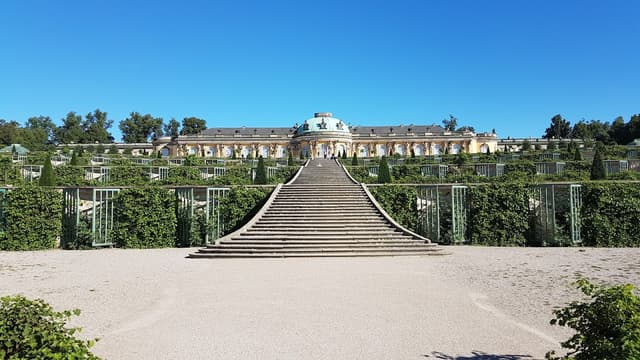
2. New Palace (Neues Palais)
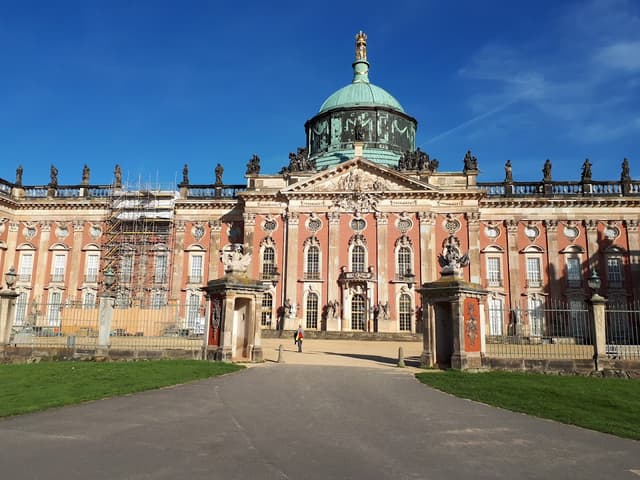
A grand Baroque palace at the western end of Sanssouci Park intended to impress visitors with its grandeur.
3. Charlottenhof Palace (Schloss Charlottenhof)

A neoclassical palace designed by Karl Friedrich Schinkel, often referred to as the "Prussian Arcadia."
4. Orangery Palace (Orangerieschloss)
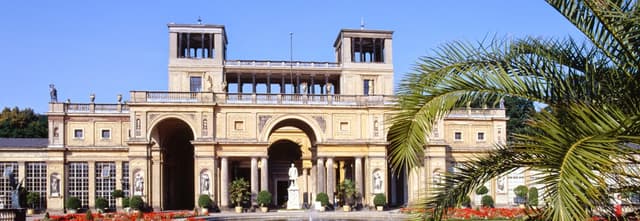
Built in the Italian Renaissance style, this palace was originally intended as a winter garden for exotic plants.
5. Cecilienhof Palace (Schloss Cecilienhof)
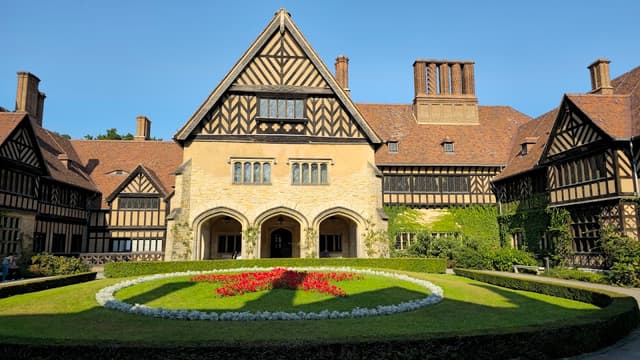
Built in the English Tudor style, this palace is famous for hosting the Potsdam Conference at the end of World War II.
6. Marble Palace (Marmorpalais)
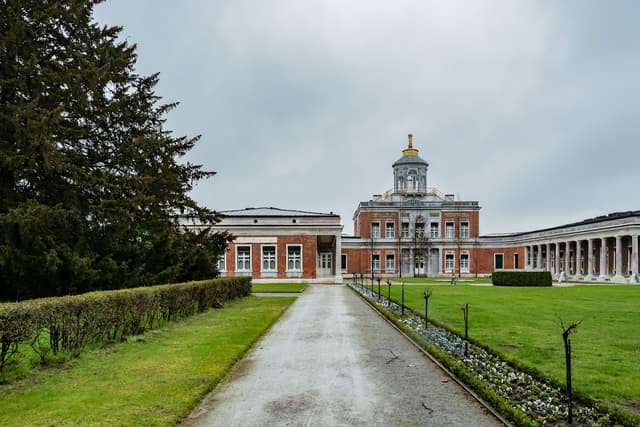
Located on the shores of Lake Heiliger See, this elegant palace is known for its neoclassical design and marble interiors.
7. Babelsberg Palace (Schloss Babelsberg)
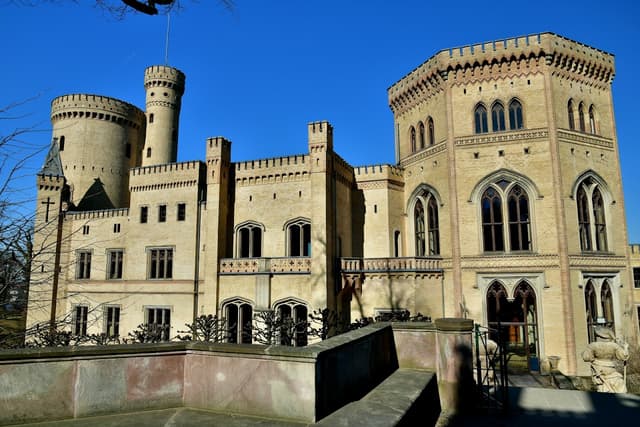
A Gothic Revival palace on the River Havel, designed for Prince Wilhelm (later Emperor Wilhelm I).
8. Kleines Schloss (Little Palace) Babelsberg
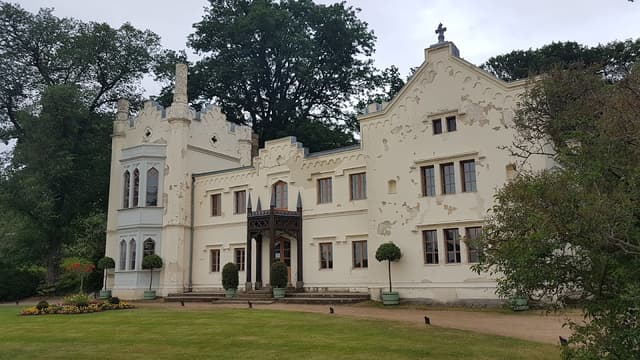
Located near Babelsberg Palace, this smaller residence was initially intended as a gardener’s residence.
9. Belvedere on the Pfingstberg (Belvedere auf dem Pfingstberg)
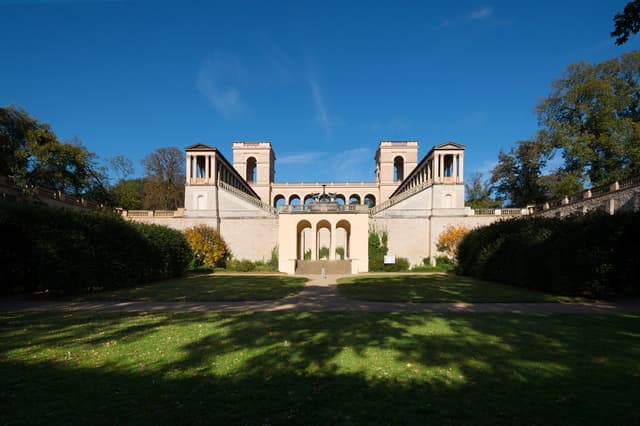
A beautiful lookout palace with twin towers offering views over Potsdam and Berlin.
10. Lindstedt Palace (Schloss Lindstedt)
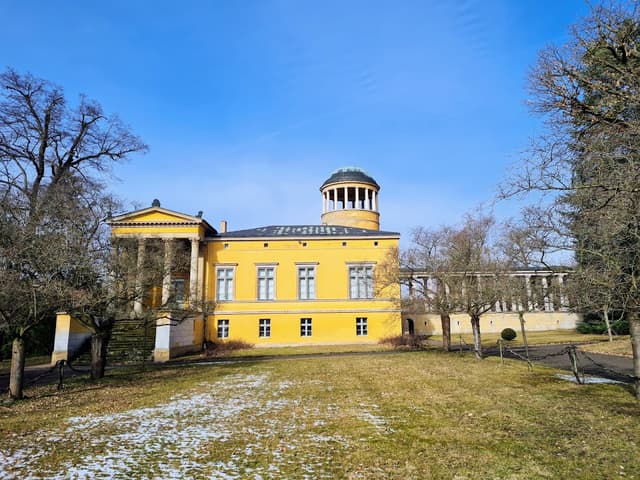
A small, elegant palace built by Frederick William IV as a private retreat.
11. Glienicke Palace (Schloss Glienicke)

Known for its Italian villa style, located close to the Glienicke Bridge that connects Potsdam to Berlin.
Spreewald Forest
Travel Time: 1 hour by train
Must-See Spots: Lübbenau village, traditional Spreewald houses, local pickle shops, winter hiking trails
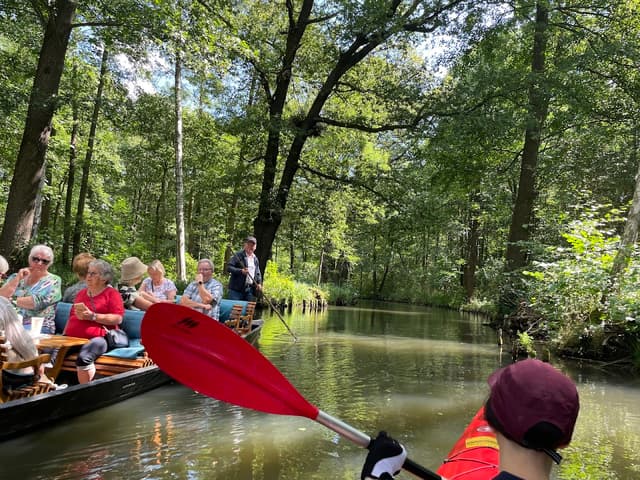
For an escape into nature, take a day trip to Spreewald Forest. Known for its canals, Spreewald in winter offers peaceful walking trails, traditional German villages, and opportunities to try the region’s famous pickles!
Leipzig
Travel Time: 1.5 hours by train
Must-See Spots: St. Thomas Church, Leipzig Christmas Market, Bach Museum

Leipzig offers a dynamic blend of art, music, and history that shines even in the chill of winter. Stroll through the city’s Old Town, visit the famous St. Thomas Church, and enjoy the festive Leipziger Weihnachtsmarkt, one of the oldest Christmas markets in Germany. Leipzig also has a vibrant arts scene, with galleries and museums that offer warm refuges on cold days. A day in Leipzig will appeal to culture buffs looking to dive into Saxony’s art and music heritage.
Wernigerode: The Harz Mountains' Fairytale Village
Travel Time: 3 hours by train
Must-See Spots: Wernigerode Castle, Market Square, Wernigerode Christmas Market
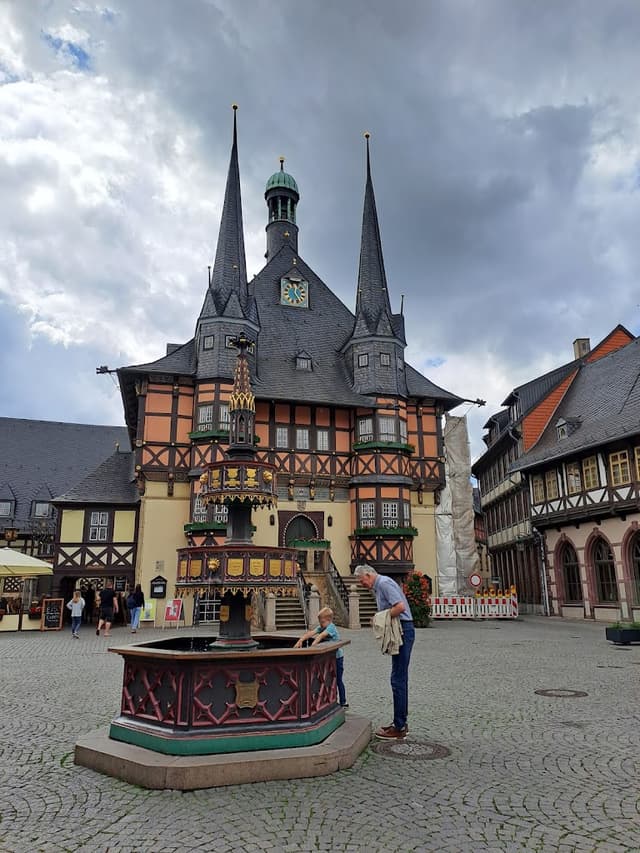
Wernigerode, another gem in the Harz region, is known for its fairytale castle perched on a hill overlooking the town. In winter, Wernigerode Castle looks like it came straight out of a storybook, with its towers and turrets dusted in snow. Wander through the colorful half-timbered houses and enjoy the intimate Christmas market, which offers regional crafts and seasonal treats. Wernigerode is ideal for those seeking an authentic German winter village experience.
Goslar: UNESCO Heritage and Alpine Ambiance
Travel Time: 3 hours by train
Must-See Spots: Imperial Palace of Goslar, Market Square, Goslar Christmas Market
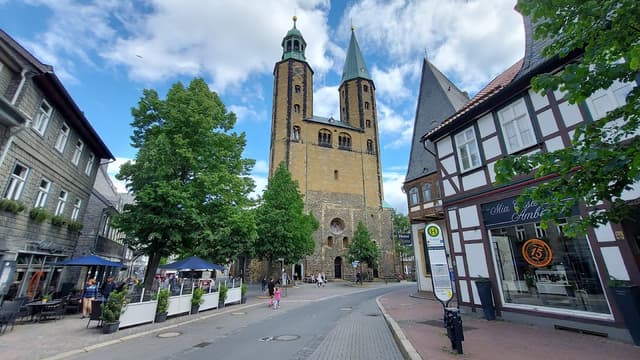
Nestled in the Harz Mountains, Goslar’s medieval streets, timber-framed houses, and UNESCO-listed Old Town are enchanting any time of year, but winter adds a new layer of charm. Visit the Goslar Christmas Market, renowned for its unique forest scene decorated with illuminated trees and rustic huts. Snow-dusted buildings and cobbled lanes make for an idyllic winter experience with a touch of alpine ambience.
Quedlinburg: Medieval Charm and Half-Timbered Wonders
Travel Time: 3 hours by train
Must-See Spots: St. Servatius Church, Quedlinburg Christmas Market, Castle Hill

Quedlinburg’s historic Old Town, with over 1,000 half-timbered houses, is like stepping back in time. A UNESCO World Heritage Site, Quedlinburg dazzles with its cobbled streets and medieval architecture, especially in winter. The city’s Christmas market is unique, featuring local artisans and a festive spirit that fills the narrow lanes and historic courtyards. Quedlinburg’s atmosphere in winter is a true delight for history lovers and photographers alike.
Sächsische Schweiz (Saxon Switzerland)
Travel Time: 2.5 hours by train
Must-See Spots: Bastei Bridge, Königstein Fortress, winter hiking trails
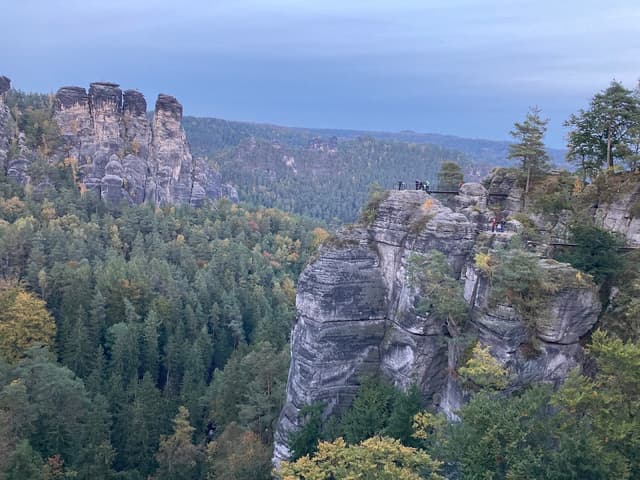
For breathtaking natural beauty, Sächsische Schweiz National Park is an unforgettable winter destination. Known for its dramatic rock formations, the park becomes a serene snowy landscape in winter, perfect for hikers and photographers. While winter hiking trails may be limited, the views from Bastei Bridge and Königstein Fortress are unparalleled, offering stunning panoramas over snow-dusted cliffs and valleys. Sächsische Schweiz is a true winter wonderland for nature lovers and adventurers.
Why take day trips in winter?
Each of these day trips from Berlin offers its slice of German culture and winter charm, from historical towns with enchanting Christmas markets to natural landscapes perfect for winter exploration. Pack your warm clothes, hop on a train, and uncover the magic of Berlin’s surrounding regions this winter season!
Final thoughts
Berlin in winter is more than just a destination—it’s an experience rich in history, warmth, and culture, waiting to be uncovered by those who look beyond the surface. By embracing the city’s winter charm, you’ll discover that Berlin’s heart beats just as vibrantly even when the temperatures drop.
Berlin all-year-round!
Are you eager to explore Berlin’s winter wonders and beyond? Start planning your trip with my Berlin's Year-Round guide and immerse yourself in Berlin’s culture like never before:
Vielen Dank!
For more insider travel content, follow me on Instagram and like my Facebook page to stay inspired with new destinations, travel insights, and seasonal guides. Happy travels, and see you in Berlin! 🎄
The home for unique & authentic travel














